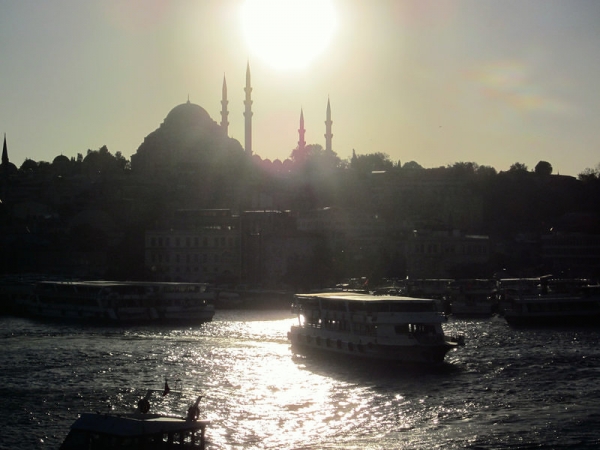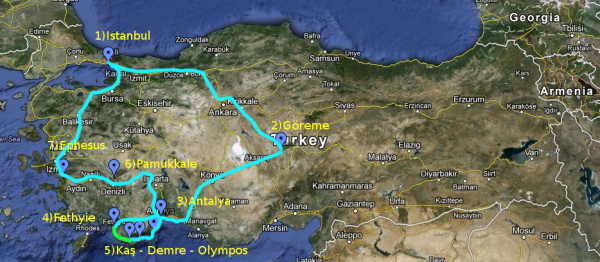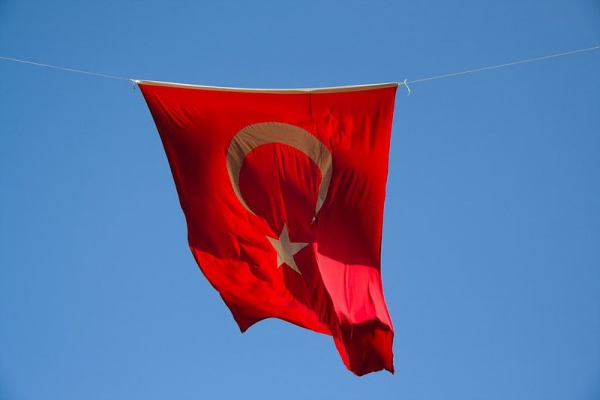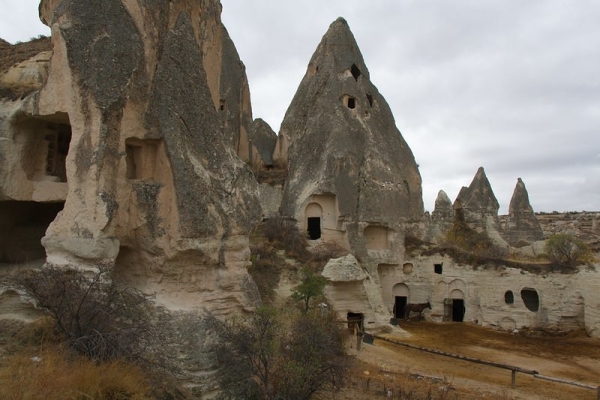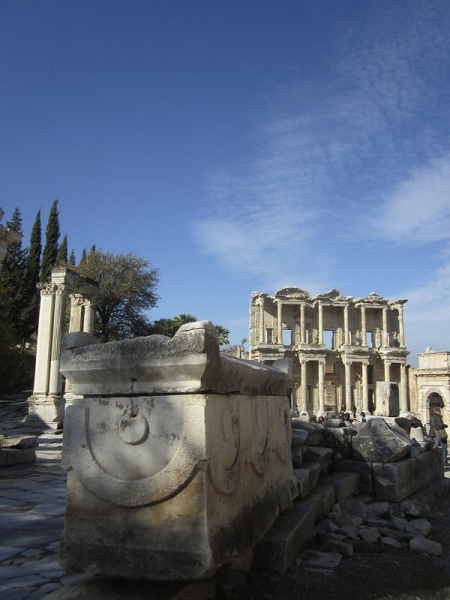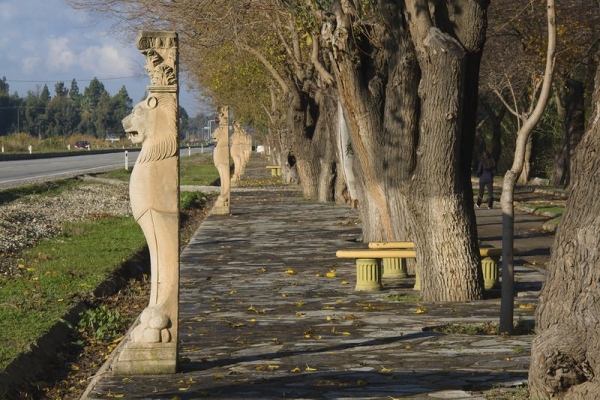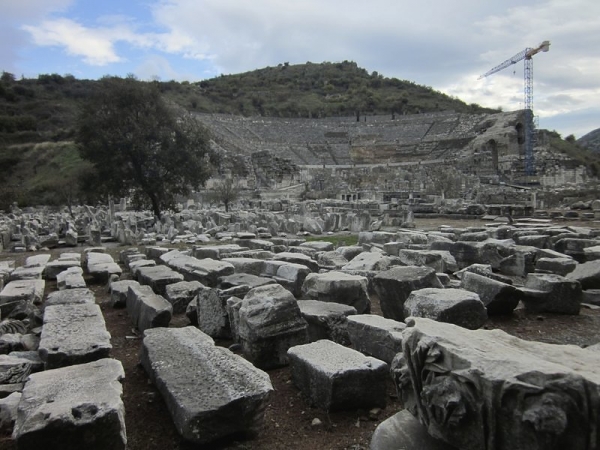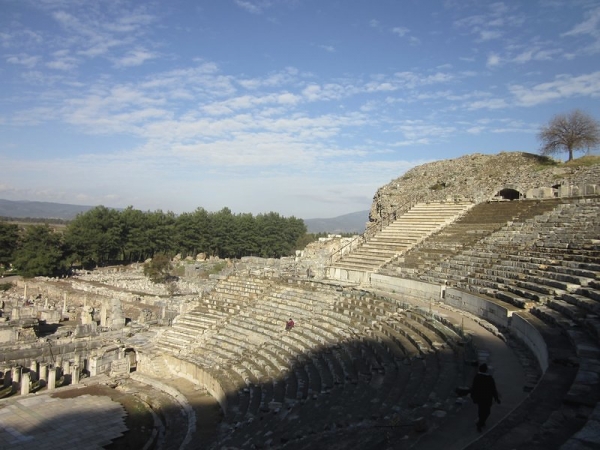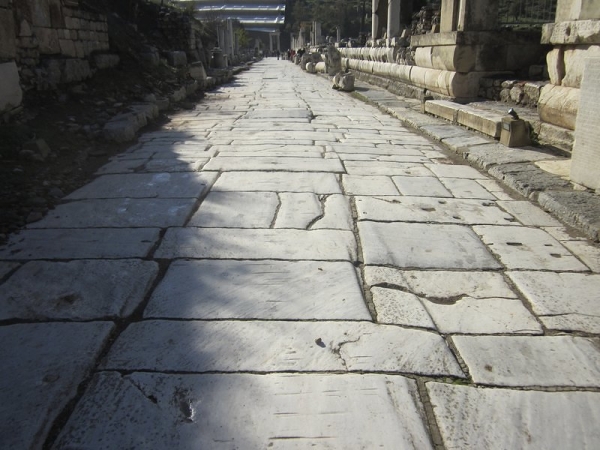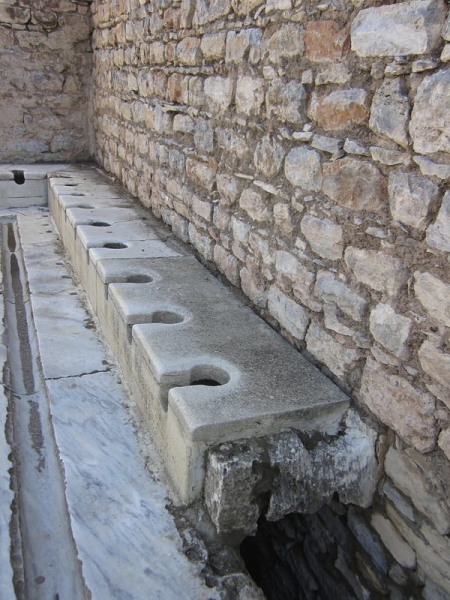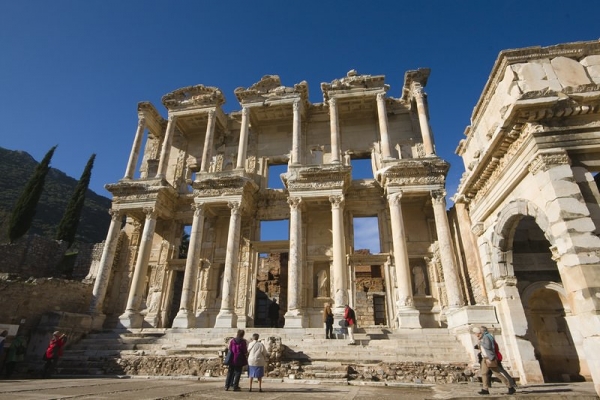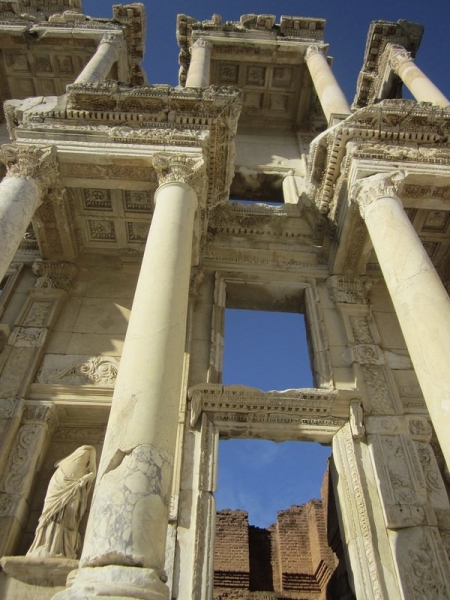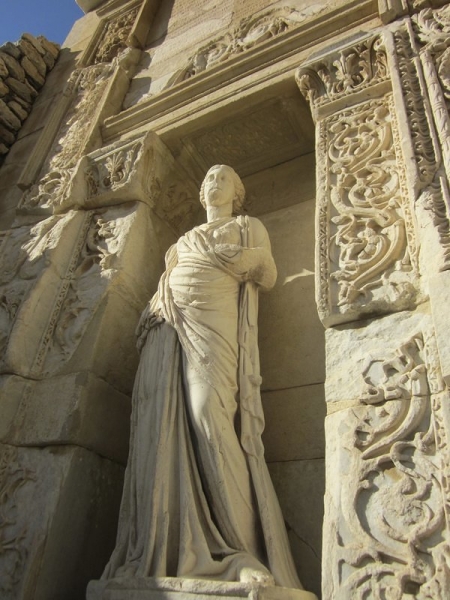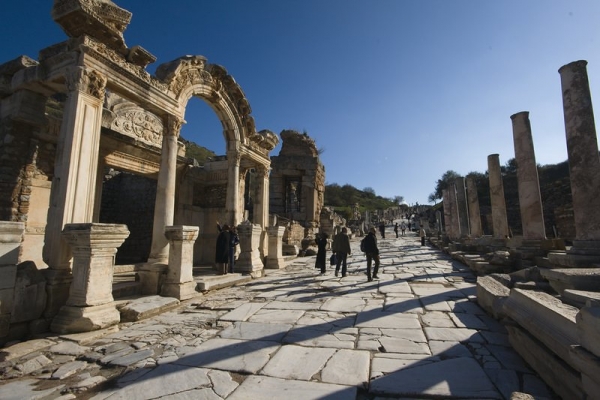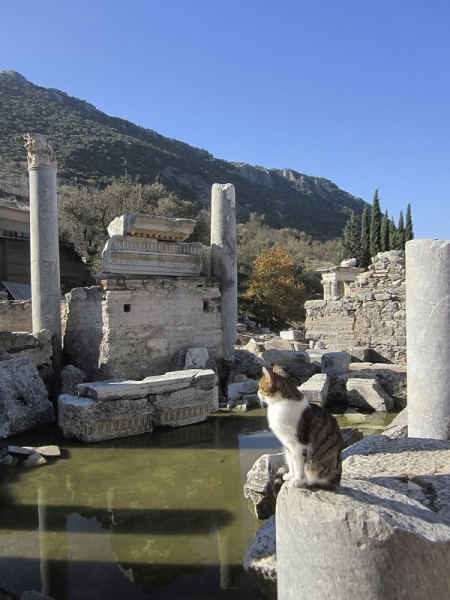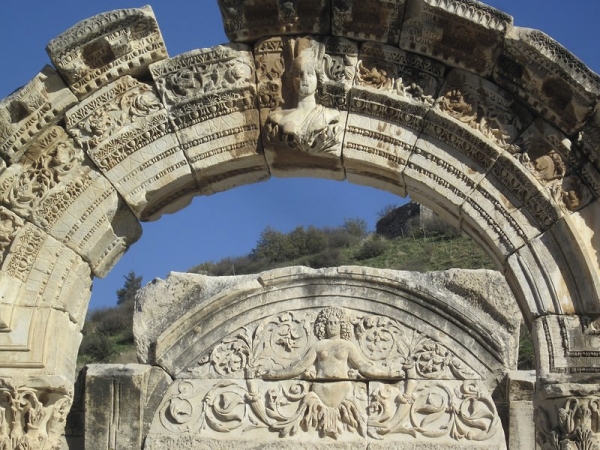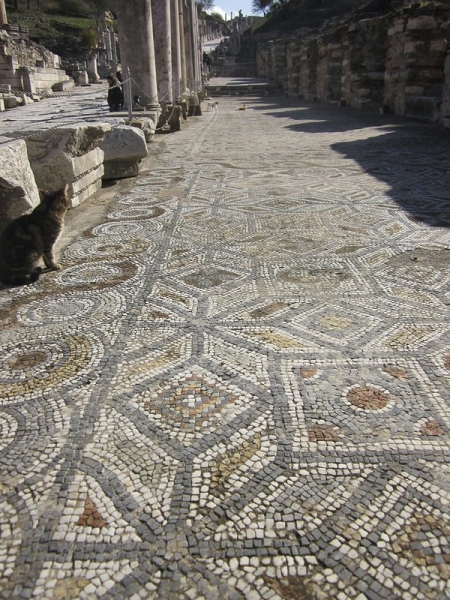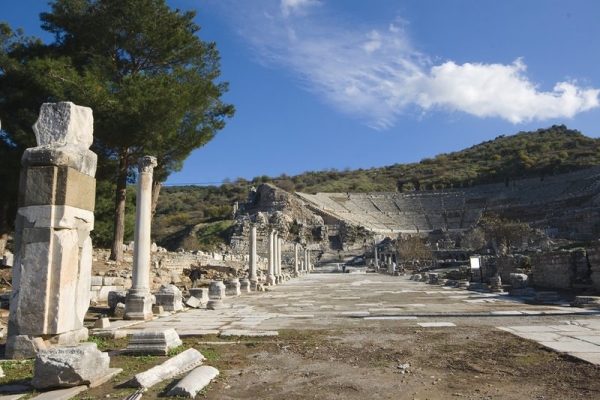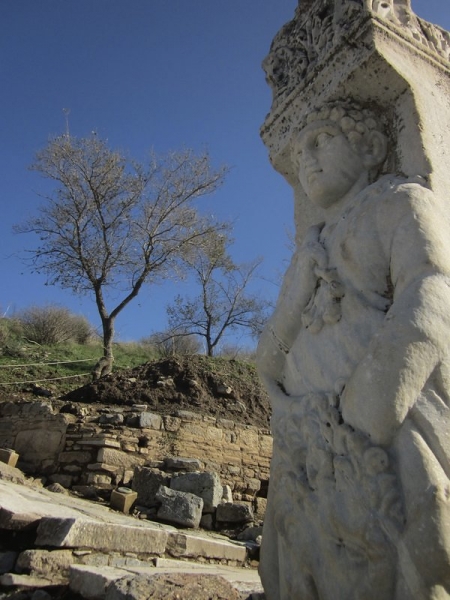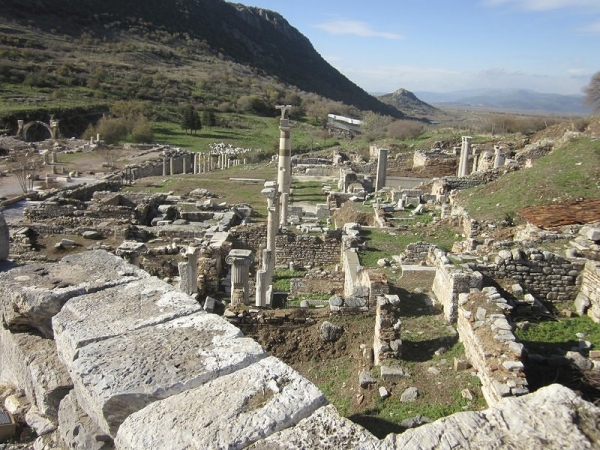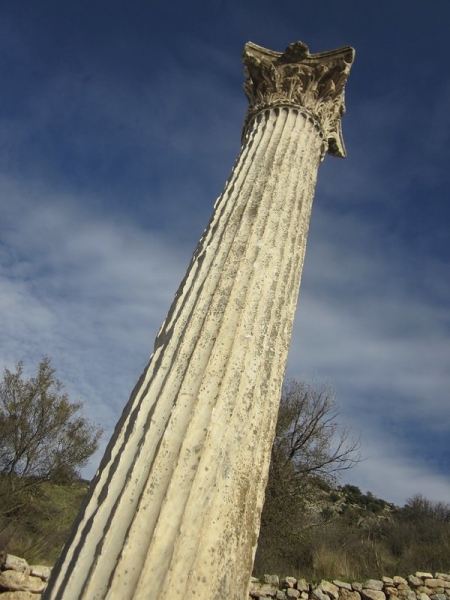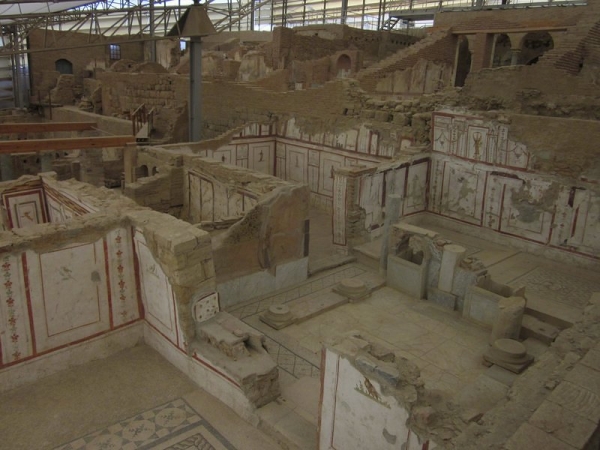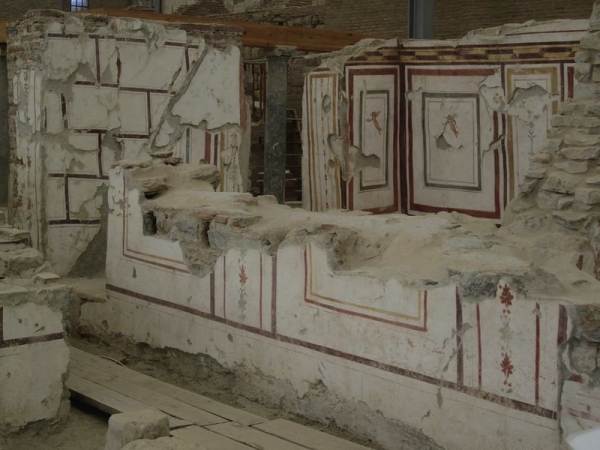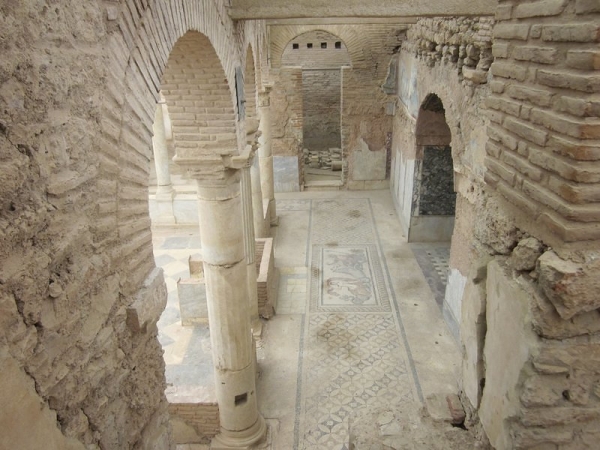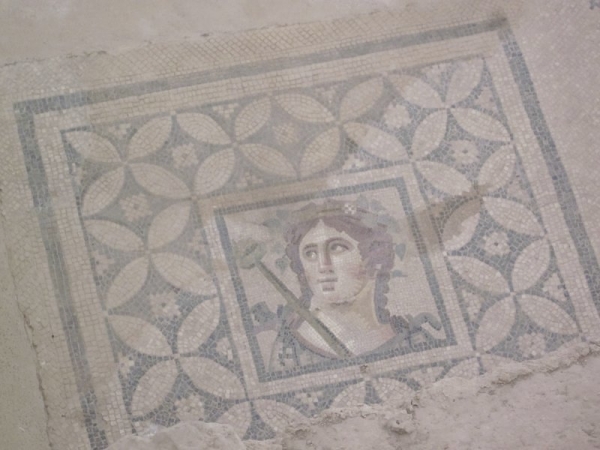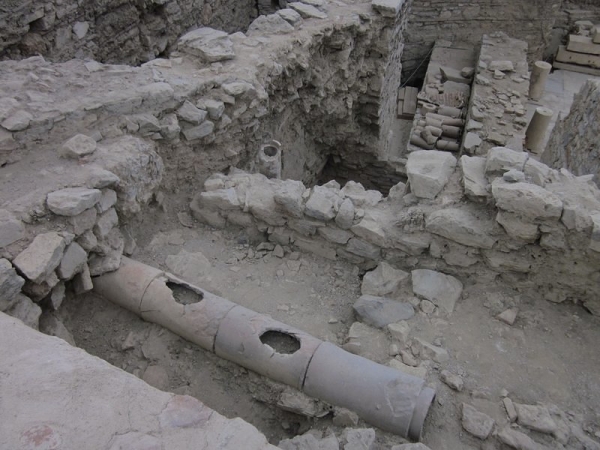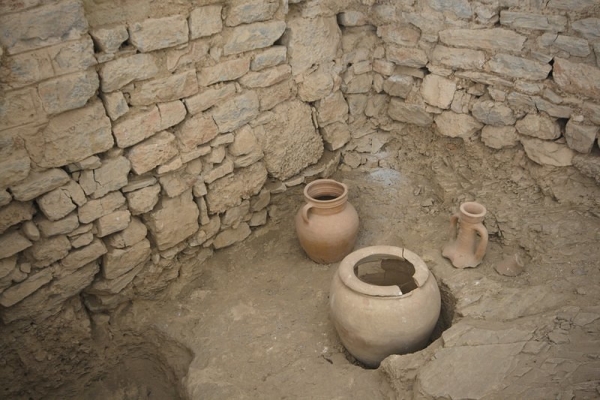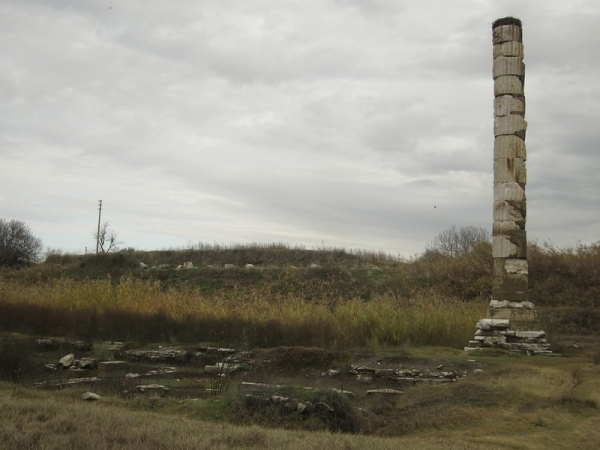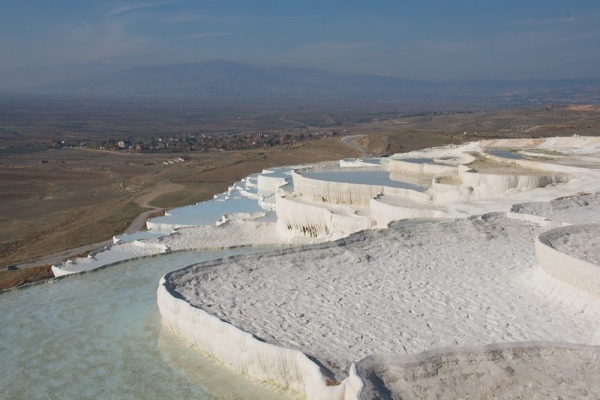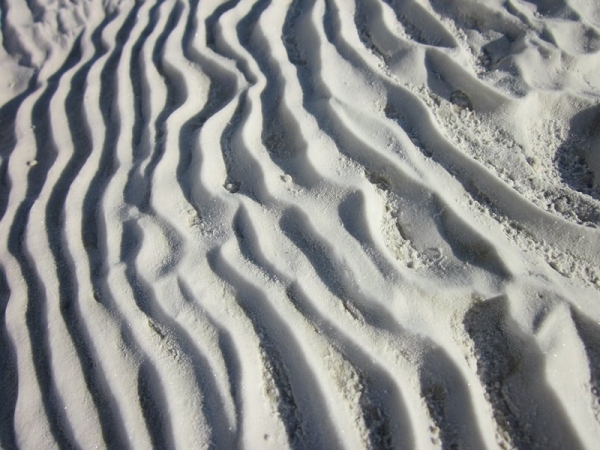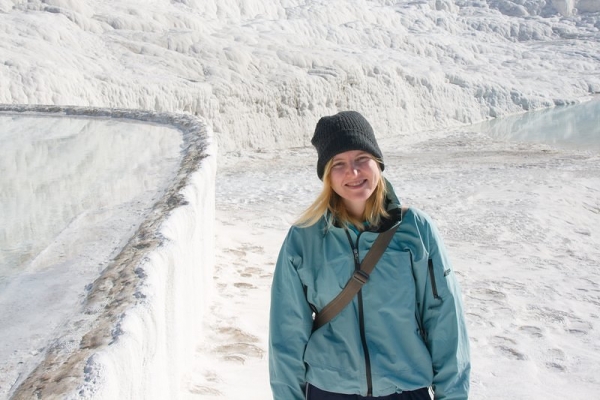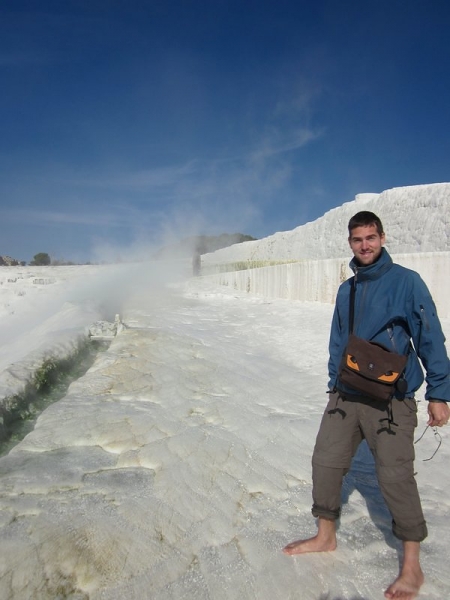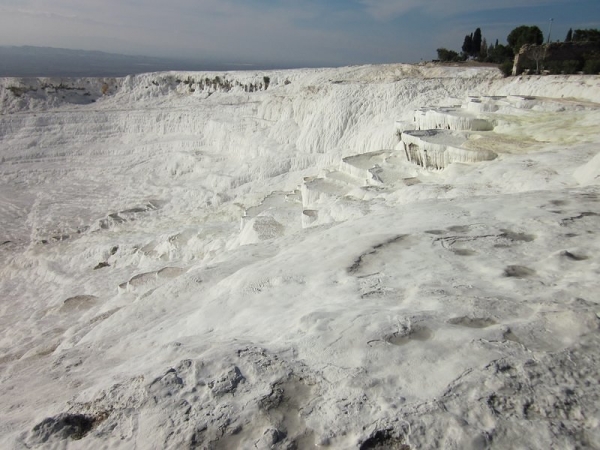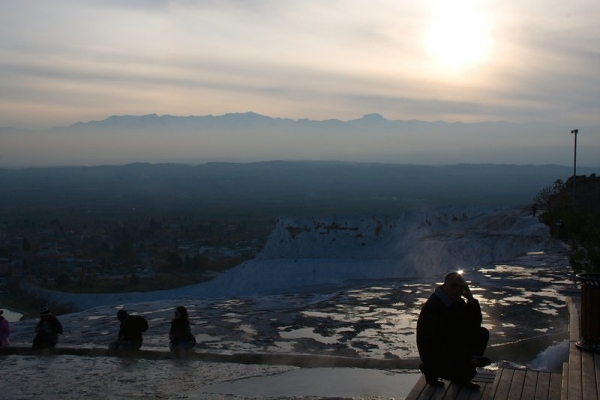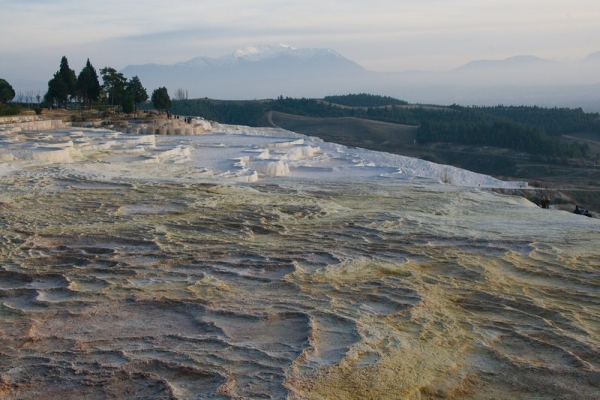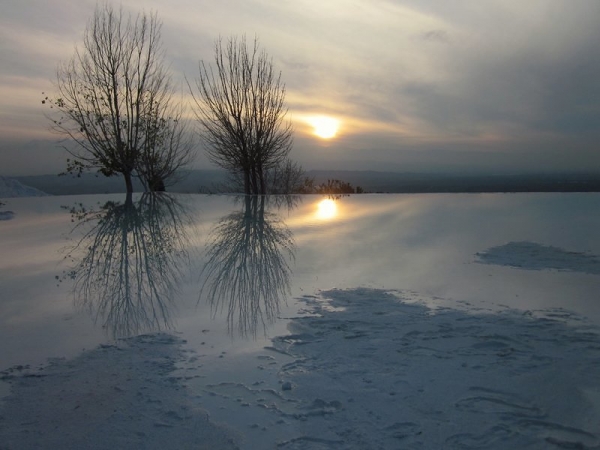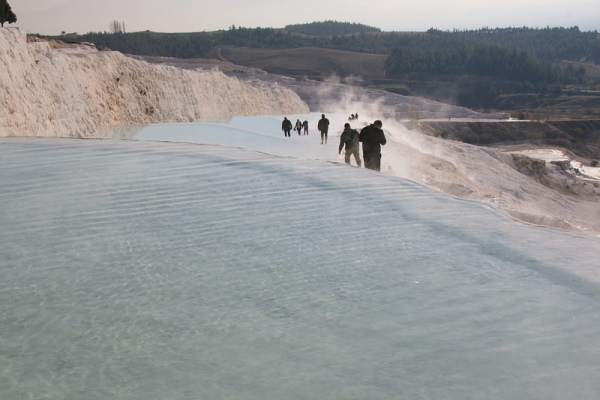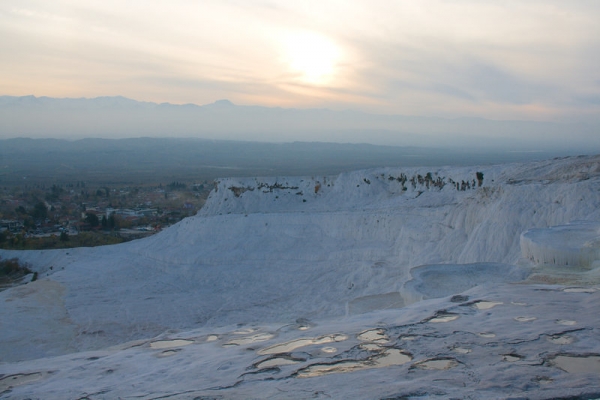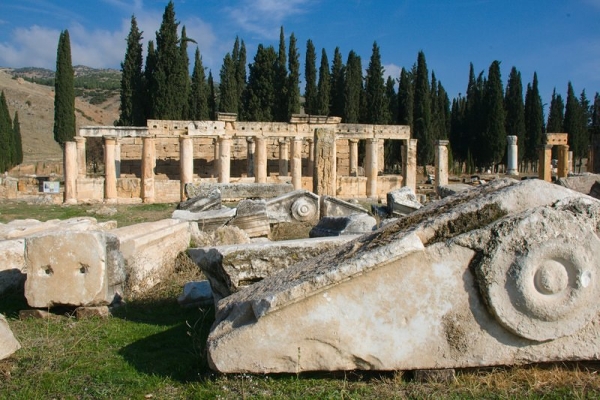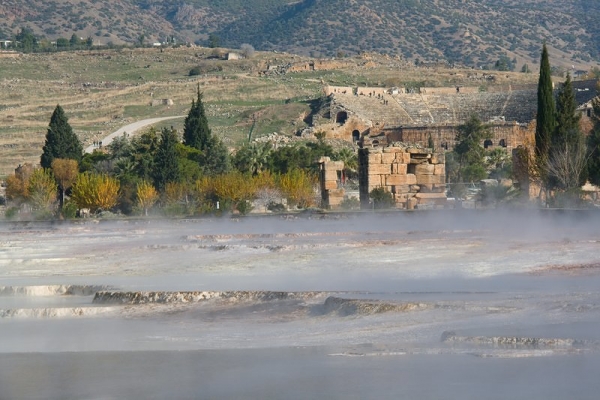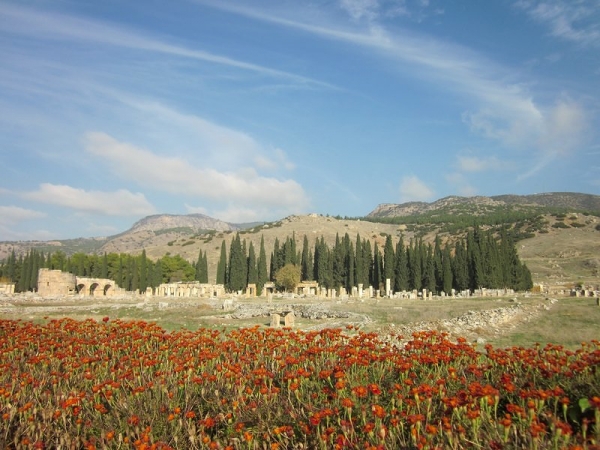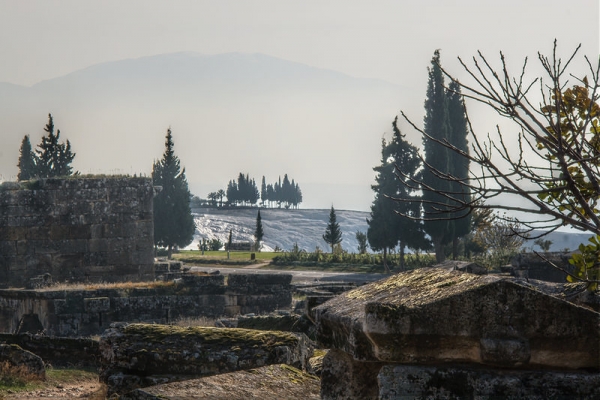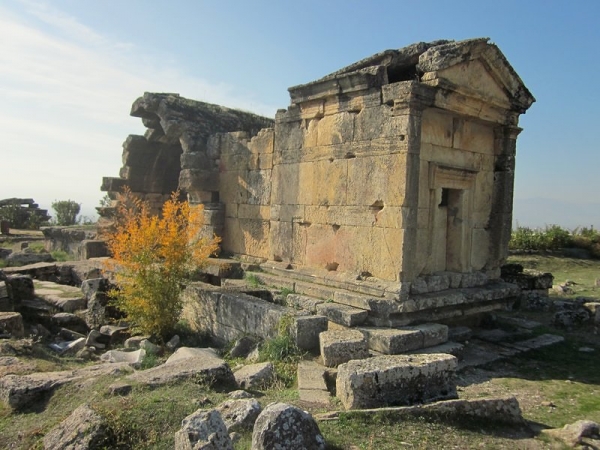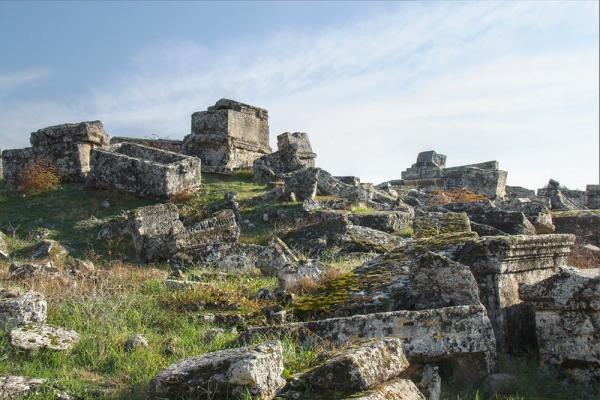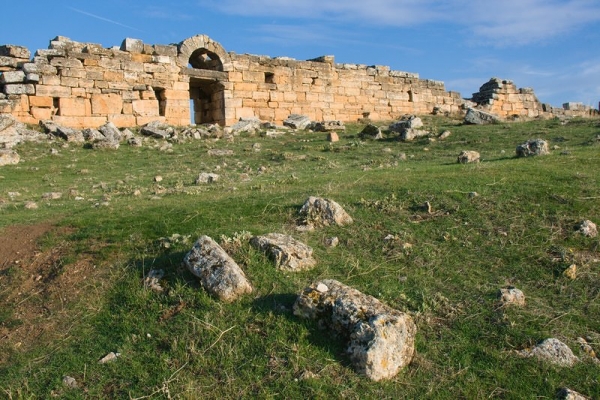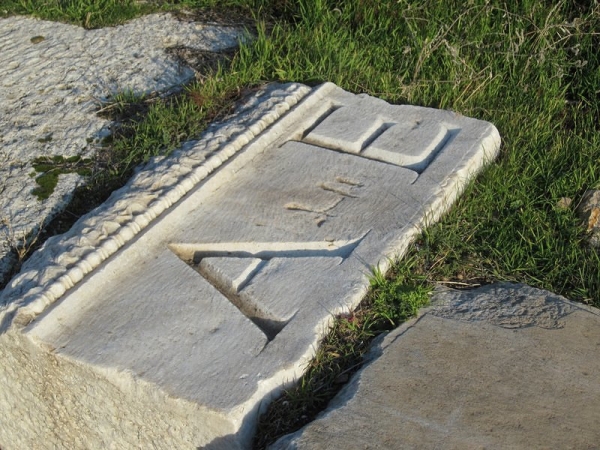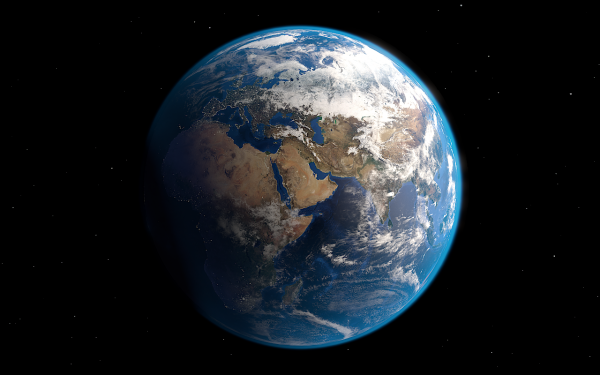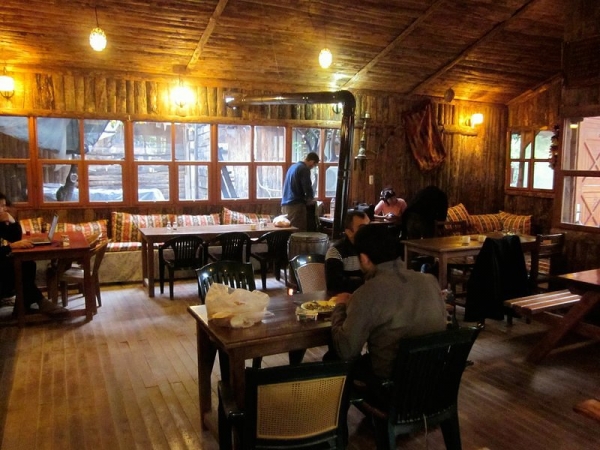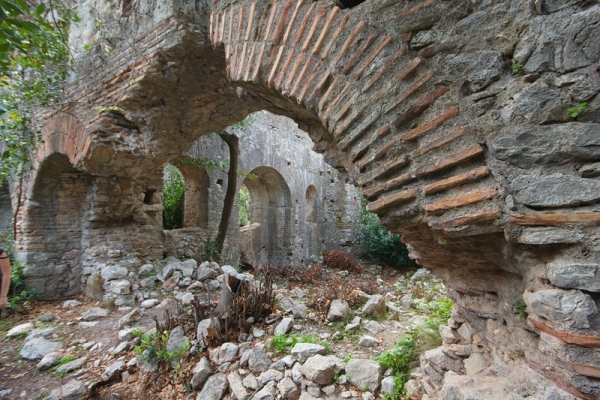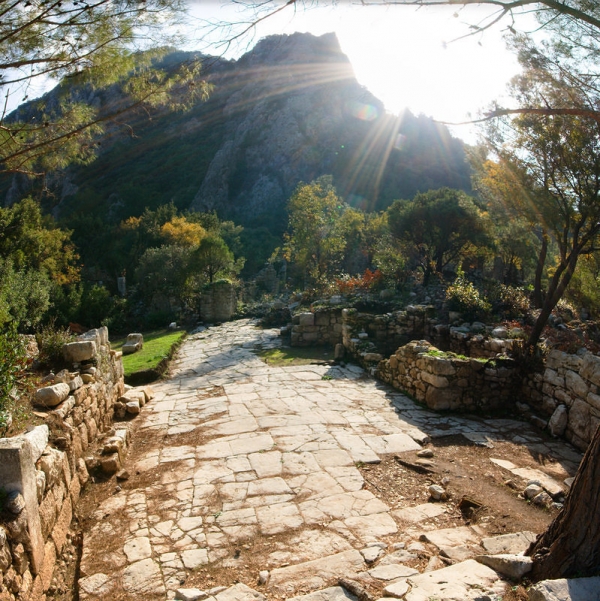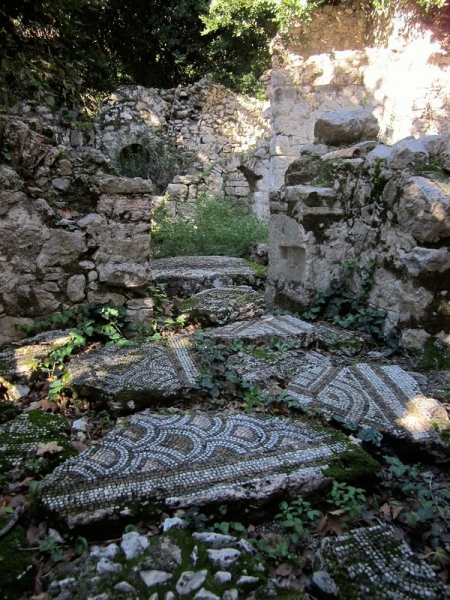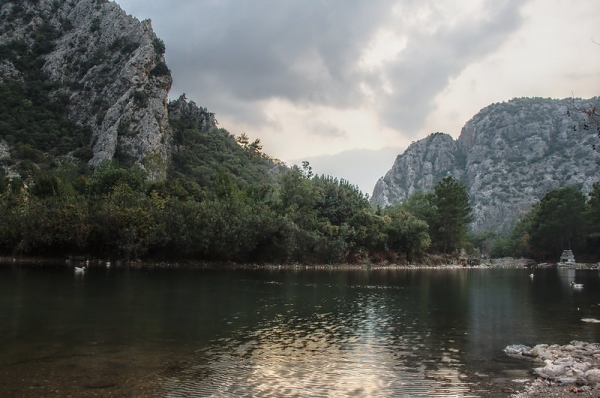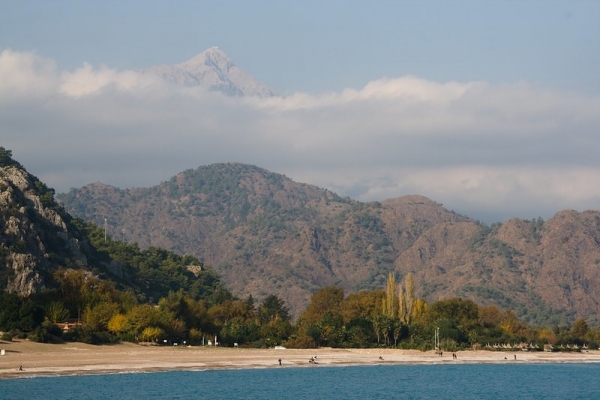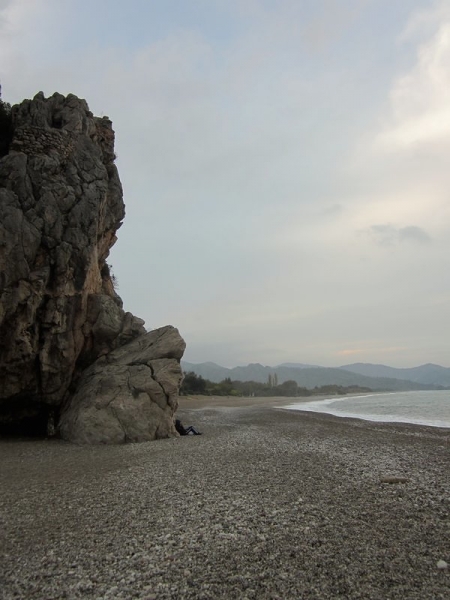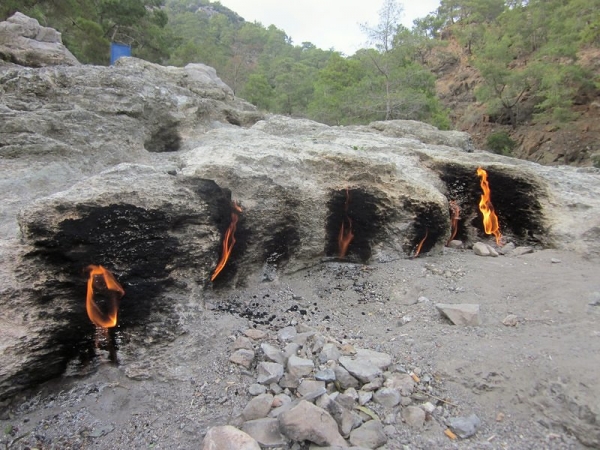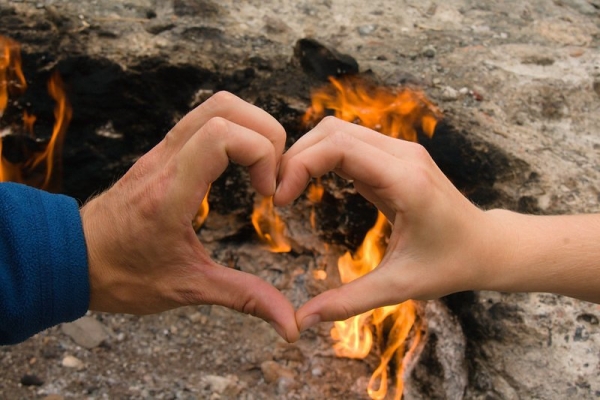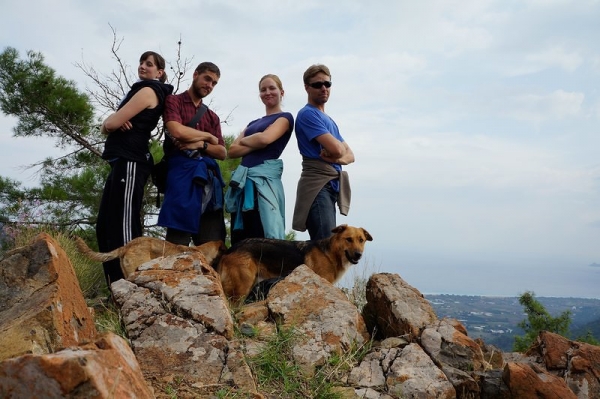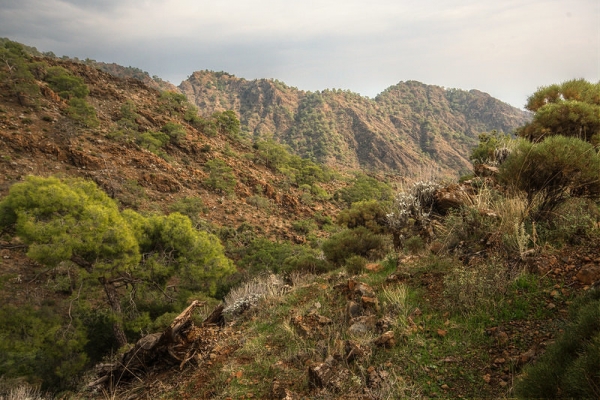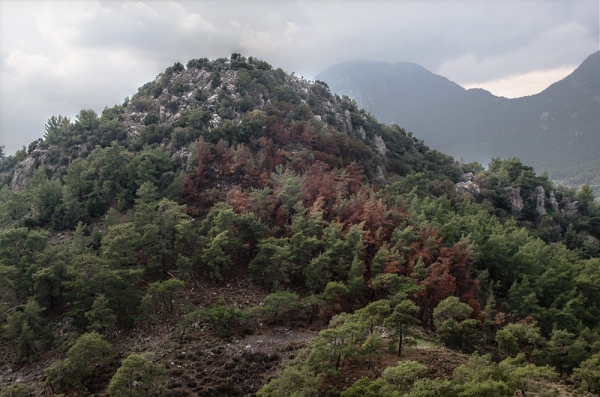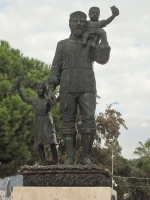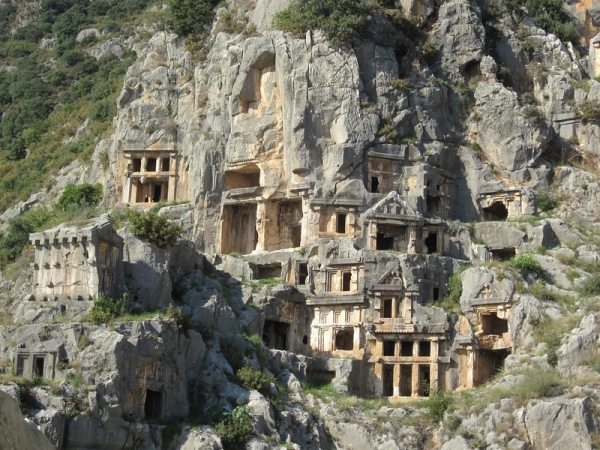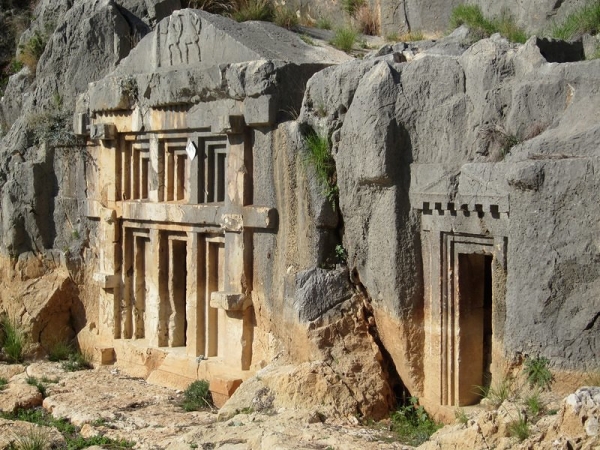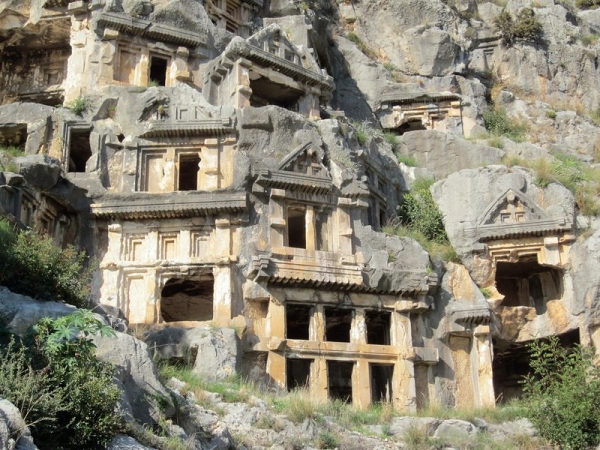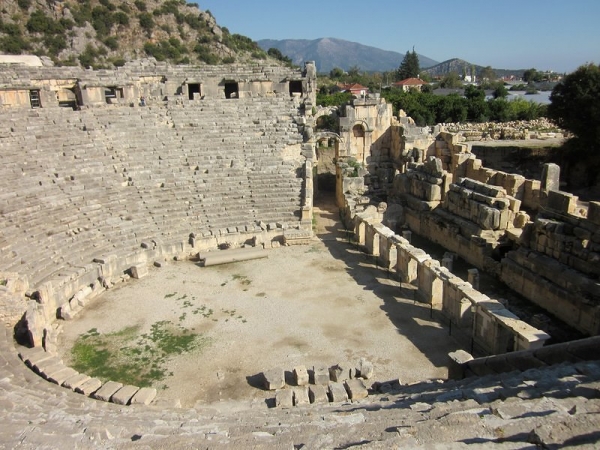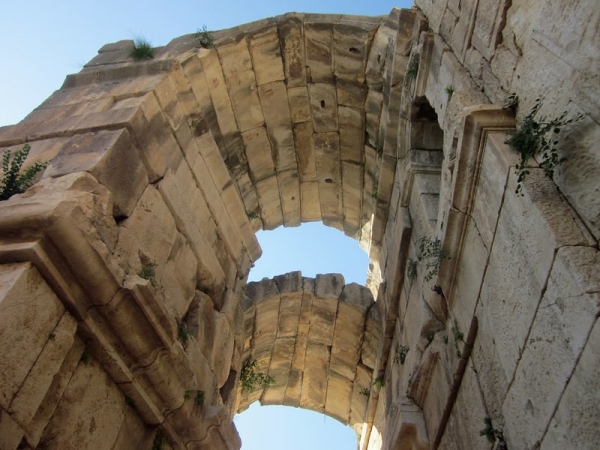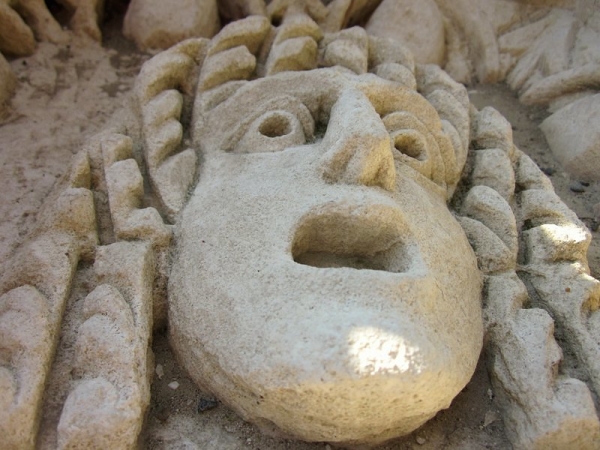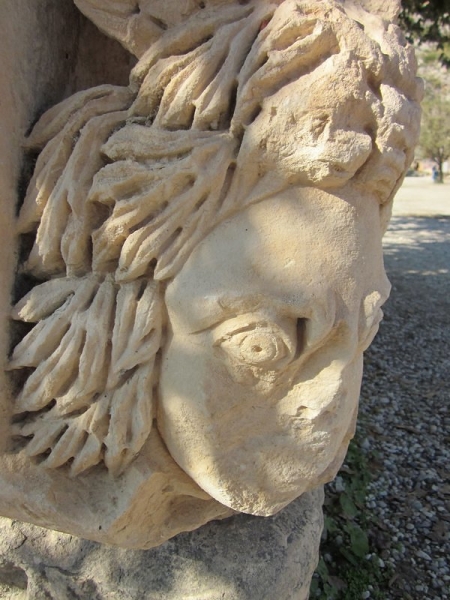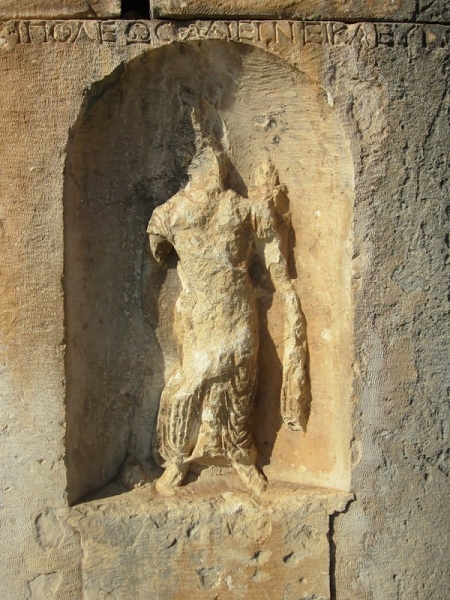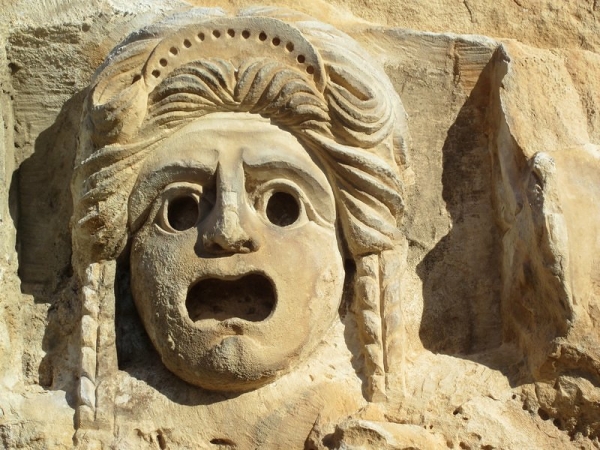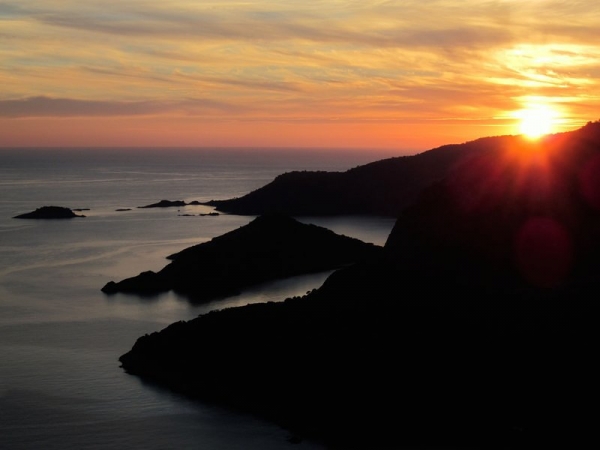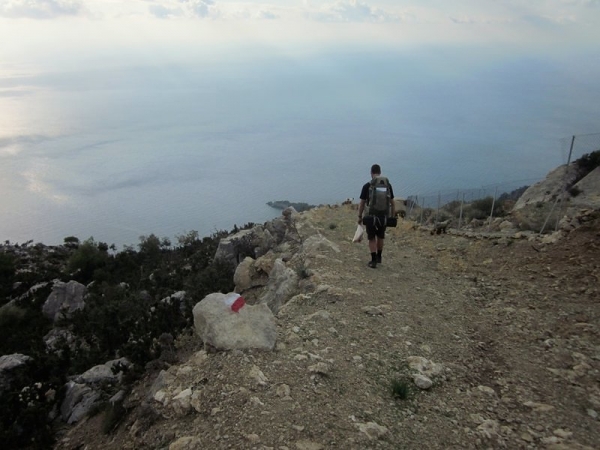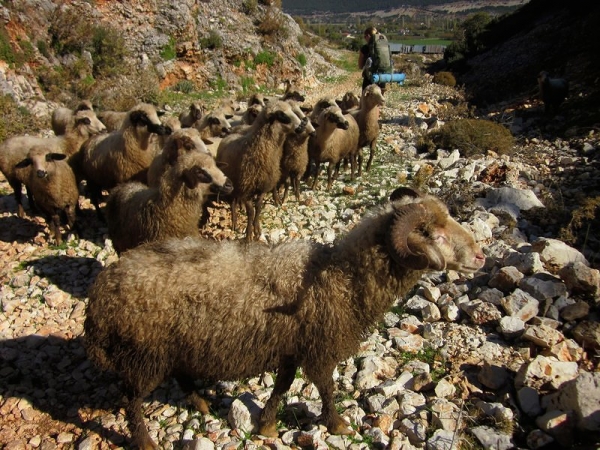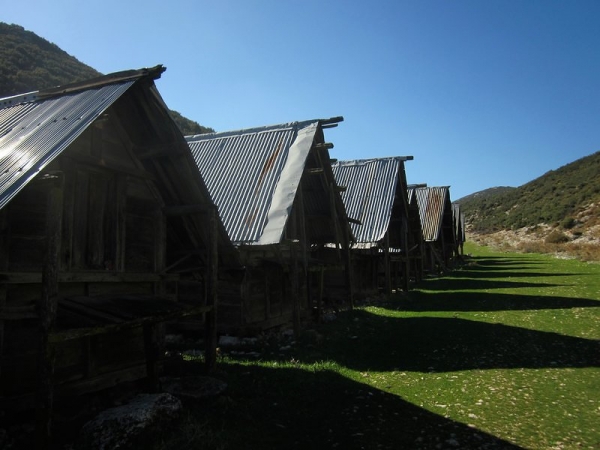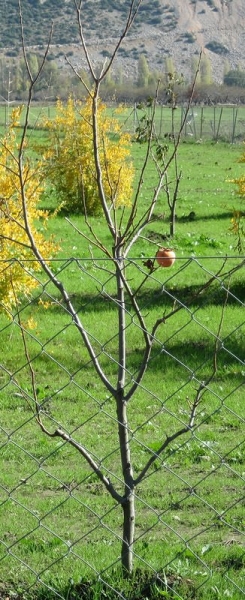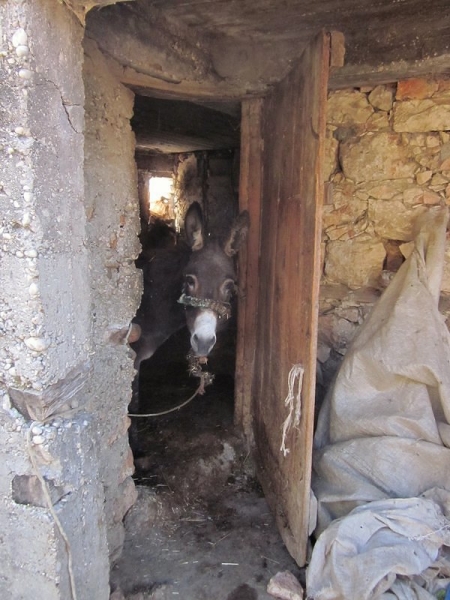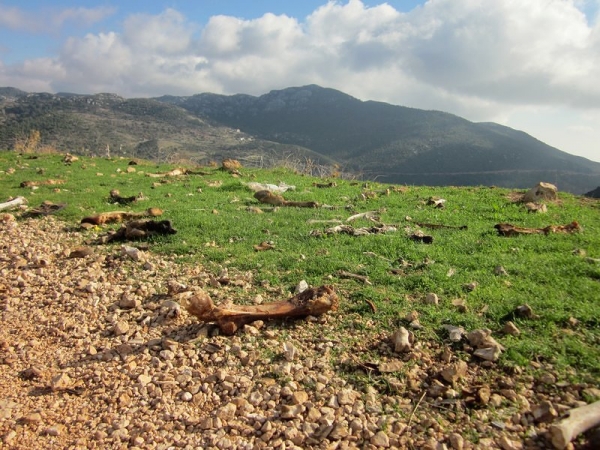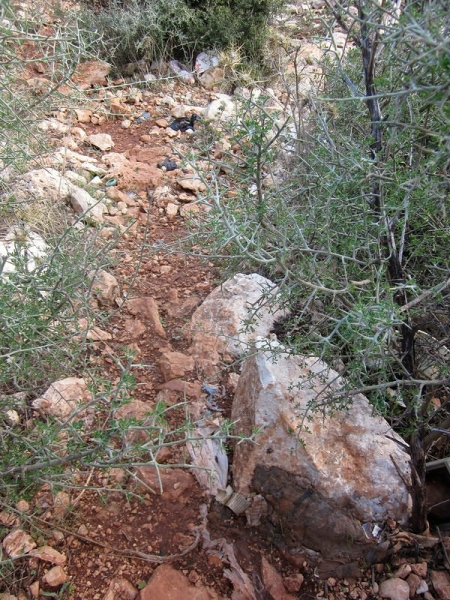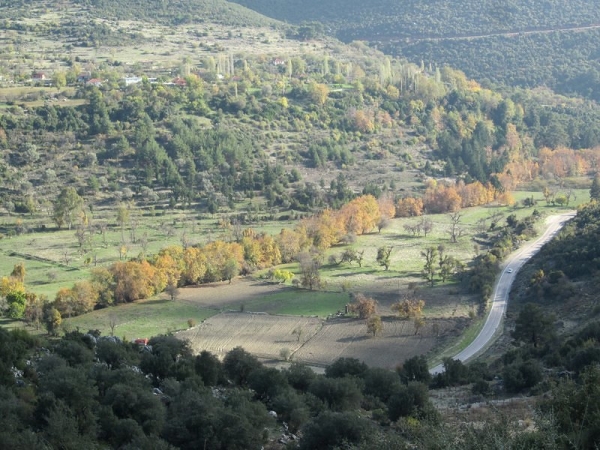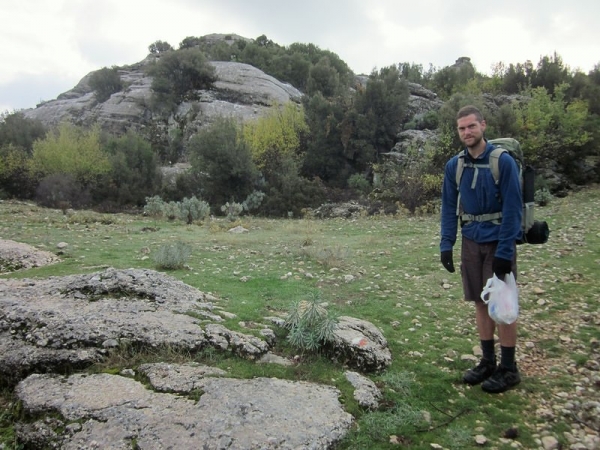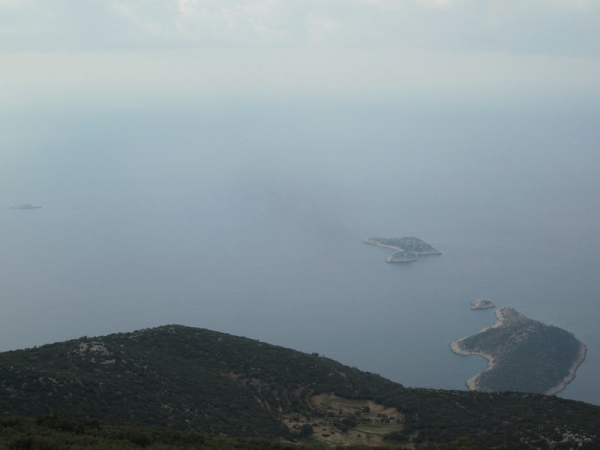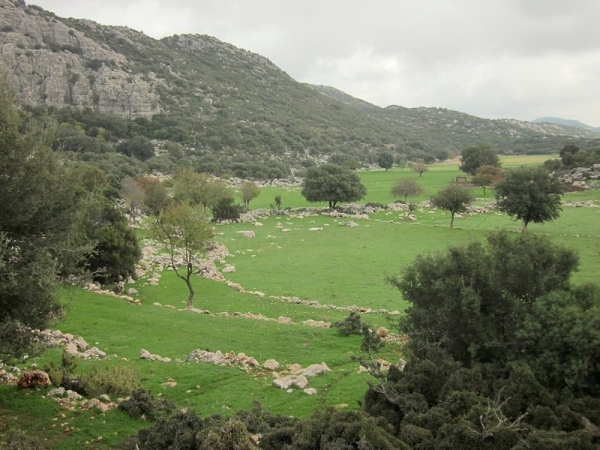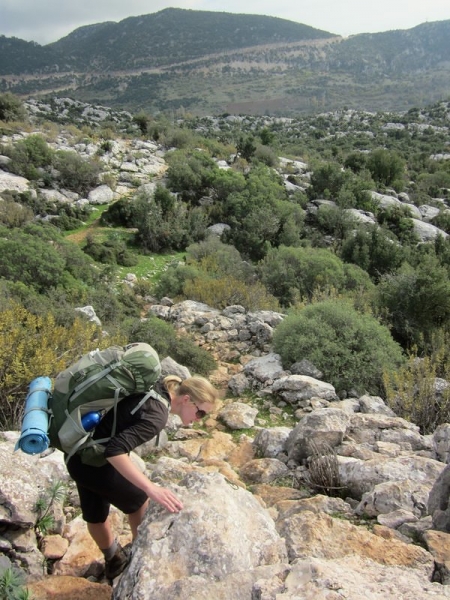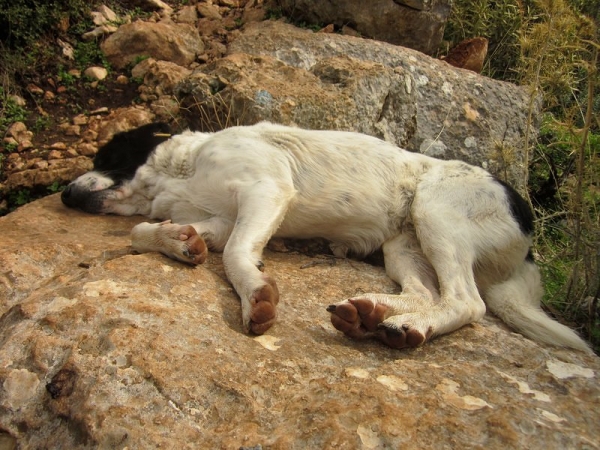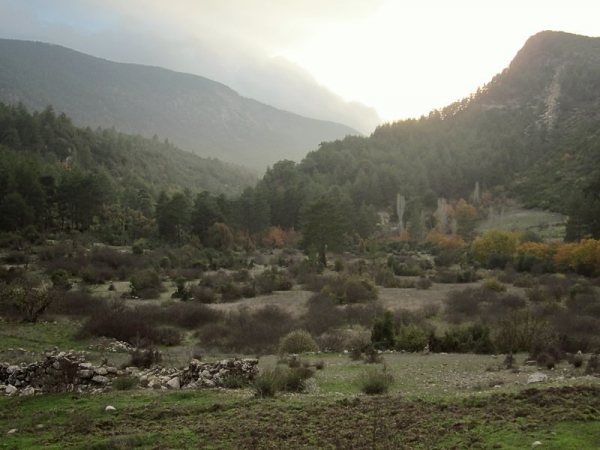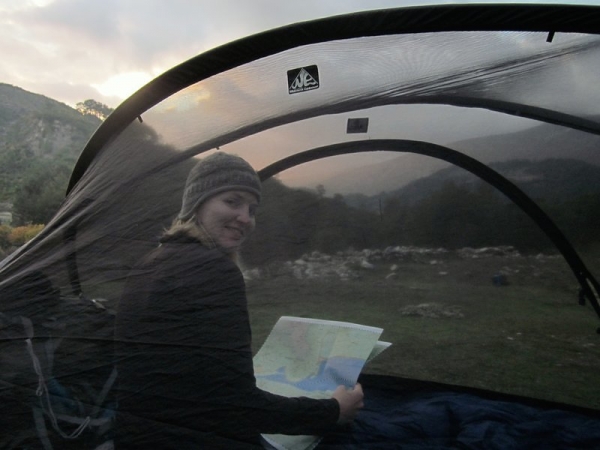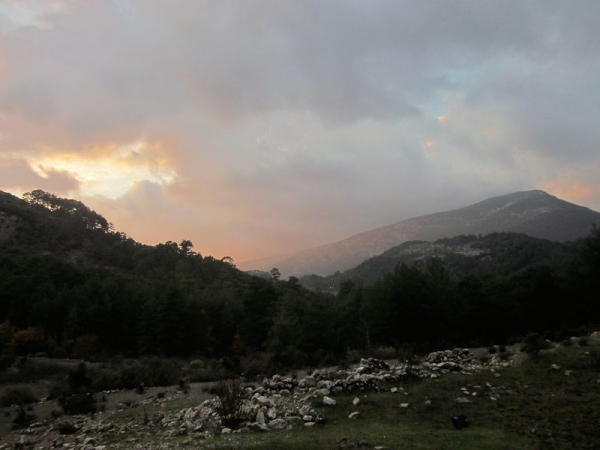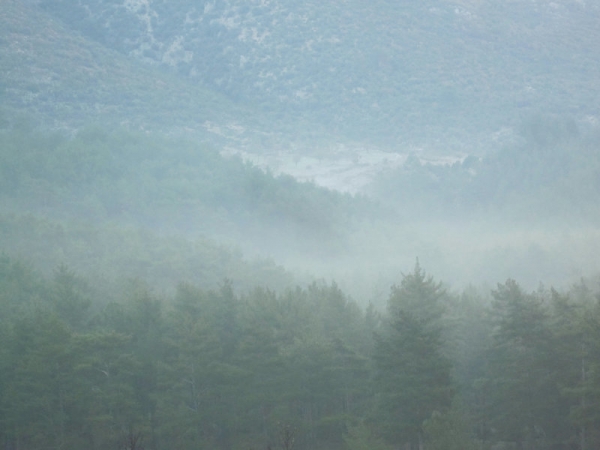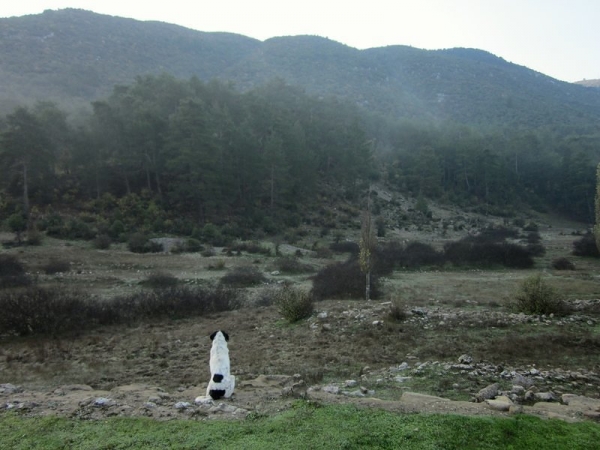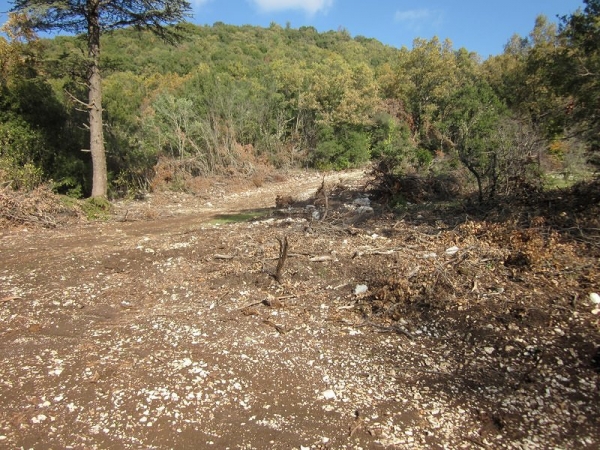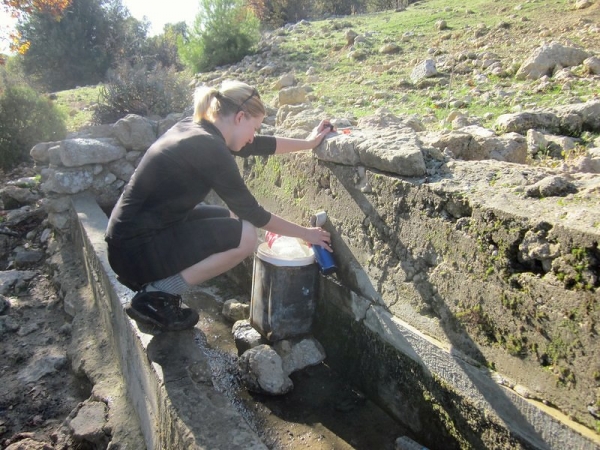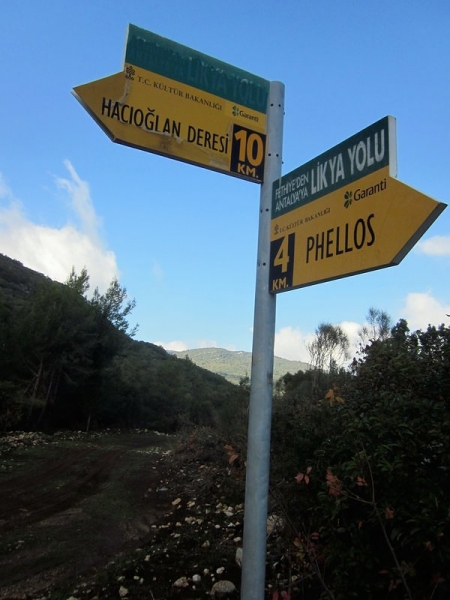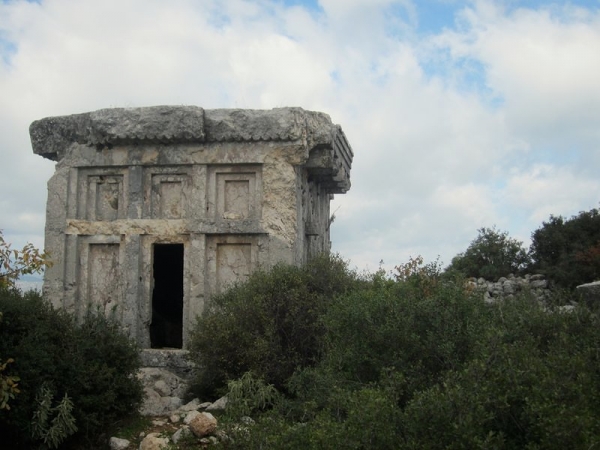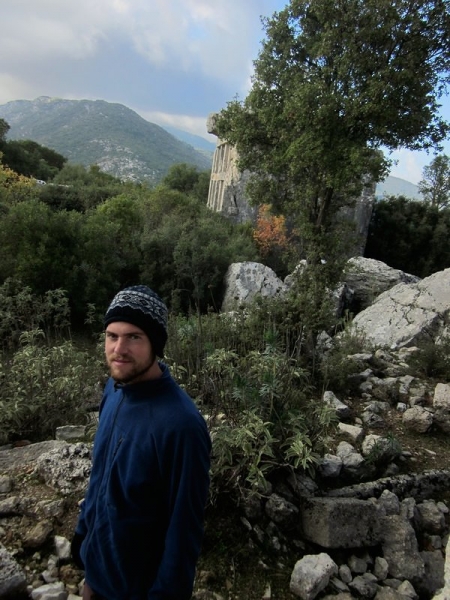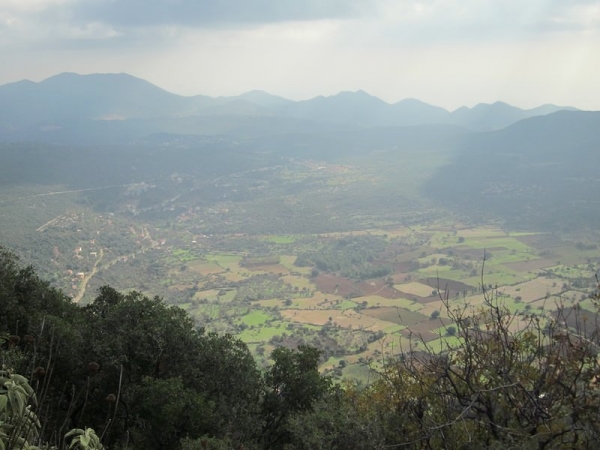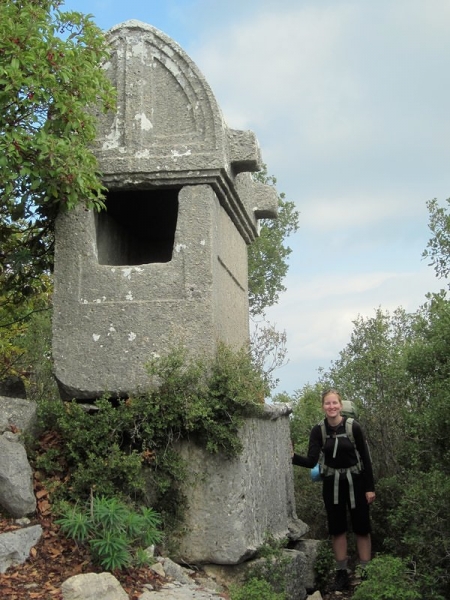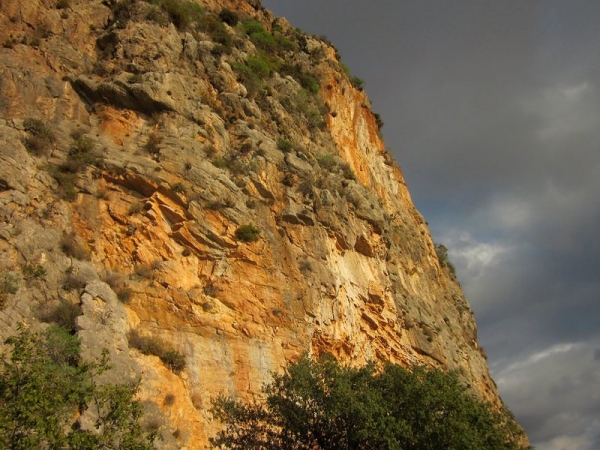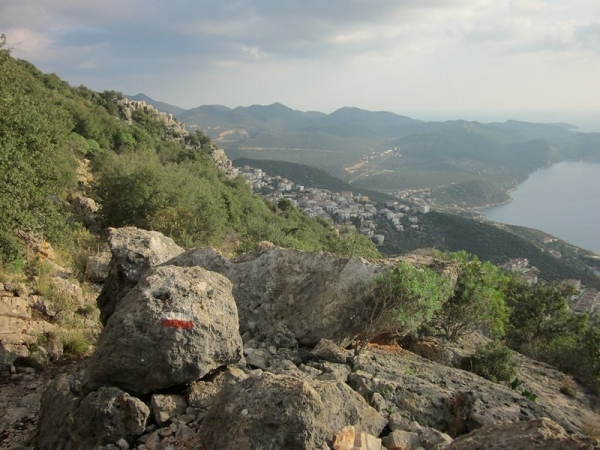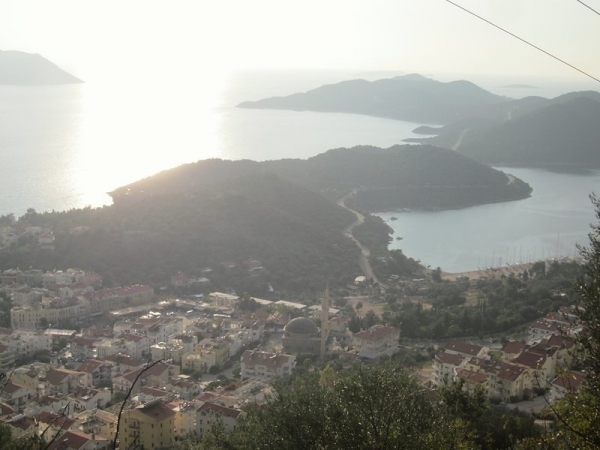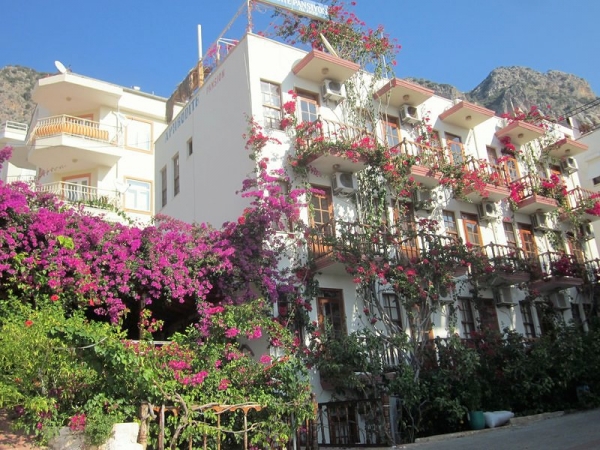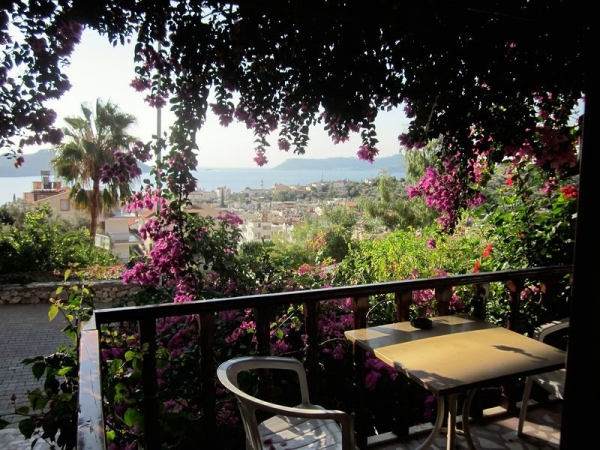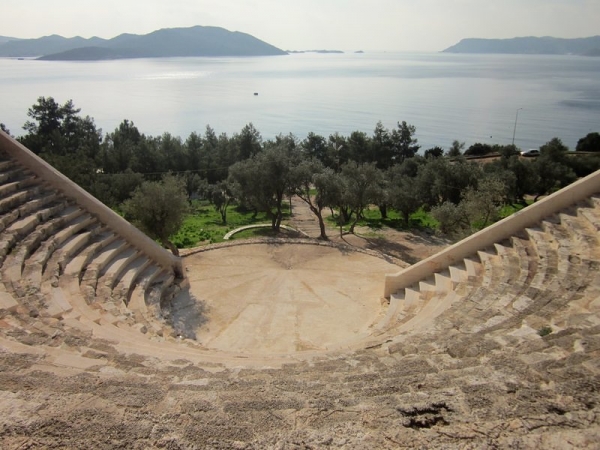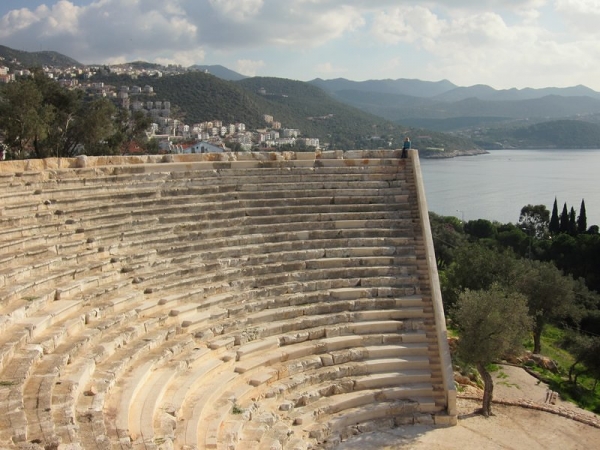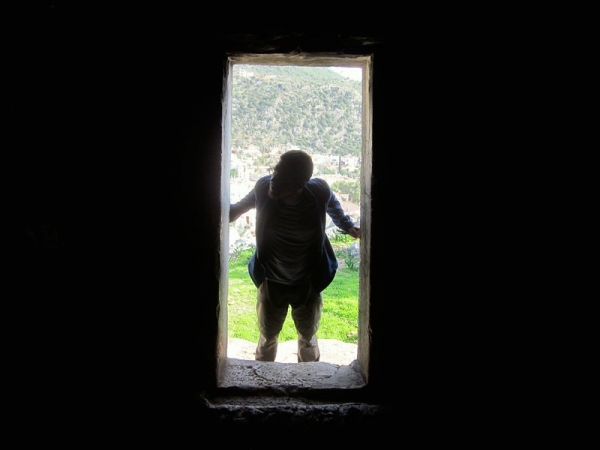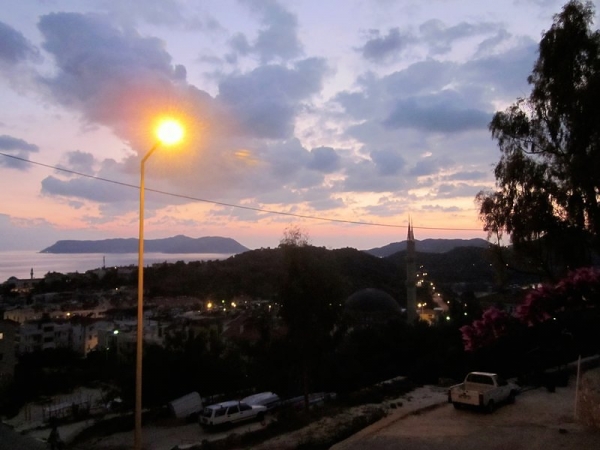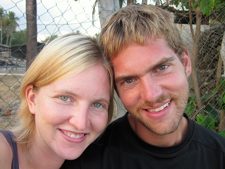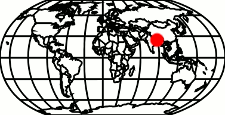This is Part 4 of 4. Click for Part 1, for Part 2, for Part 3.
Day 11
Kalkan – 4 km before Saribelen
13 km (7hours)
Today’s trail was mostly uphill and fairly well-marked and well-defined. As we climbed, we passed a shepherdess with her sheep and goats. She had just stopped to sit on a rock and split open a pomegranate. As we passed, she smiled, and held out a hand full of pomegranate seeds for each of us. She obviously had very little and, like so many times before on this trail, her kindness and generosity surprised and moved us.
Sheep on the trail
As we crossed a yayla (a large, flat mountain plateau), someone called out to us. Though we couldn’t understand her words, her tone and gestures made her meaning clear enough. She didn’t want Mayhem (the dog that had adopted us for the better part of the trail and had been with us for over a week) anywhere near the yayla. I think she was worried about Mayhem barking at or chasing her sheep. She needn’t have worried – by this time, we had realized that although Mayhem loved to chase goats in the cliffs, she left them completely alone when there was a village or shepherd nearby.
Yayla
Apple tree
We quickly crossed the yayla, so as not to upset the locals further with Mayhem’s presence. We stopped in the village of Bezirgan at the edge of the yayla to restock with supplies. We had only replenished our emergency and snack stops at Kalkan, counting on the store here for lunch and supper supplies (who wants to carry the extra weight all morning when you don’t have to?). The store was closed as it was Friday prayer time, so we rested on some benches outside of the mosque, waiting for about half an hour for the prayers to finish.
When the mosque let out, it appeared all the men in the village headed straight to the store to buy their lunch. We managed to snag the last few loaves of bread, then proceeded to ask for some Ayran and cheese located in the cooler. The owner refused to sell them to us, telling us that they were “finished.” We weren’t sure if the cooler didn’t work and thus they were rotten, or if they were past date, or if he just didn’t want to sell us the few supplies he had in this remote village. So we made a lunch of the bread and supplemented it with some of the nuts and raisins we were carrying.
Hello!
After the yayla, the trail made a steep descent through a valley. Here, the scenery turned downright apocalyptic – the grass and road were littered with pieces of dismembered cows – skulls, leg bones, and ribs could all be seen (some with rotting flesh still attached). There was even an entire hide lying in the middle of the road. The stench was almost unbearable.
Cow graveyard?
At the bottom of the valley, after passing through some more scratchy brush like we had encountered back near Delikkemer, we found a good tent site and decided to call it quits a little early (about 3:15 pm).
Thorny bushes overgrowing the trail… ouch!
Our tent site for the night
We were past the bovine massacre and it really was quite the picturesque spot. There was a farmhouse nearby, with a mama dog with four pups who didn’t take too kindly to Mayhem, but we figured it would do. The sun was setting behind the surrounding mountains, and it was cold. We had our toques and mitts on before we had even finished setting up camp.
We cooked up some soup noodles with cream of vegetable soup for flavouring, hoping to repeat our delicious bulgur wheat experiment. Alas, all we got was soup flavoured dough balls. Since we were low on supplies, we choked them back and crawled into our sleeping bags by 4:30 just to conserve what heat we had left.
Day 12
4 km before Saribelen – location near Stepping Stones
25 km (8 hours)
Last night was probably the most challenging night yet – more challenging than the wild pigs, the bubbling brook that sprang up beneath us as we slept, and the tent pole that broke during an intense electrical storm. We were COLD all night, and the barks of Mayhem and the local dogs kept waking us up and reminding us of that fact.
My sleeping bag was rated to 10°C at the “comfort” level, though at the “extreme” it was supposed to be good to -8°C. We figured it was pretty darn close to zero that night and even with a sleeping bag liner, there was nothing comfortable about it.
When I finally “woke” up, my feet were like ice and totally numb. We broke camp as quickly as our frozen limbs would allow, making a breakfast of some more nuts and chocolate. We were too cold even to stand around heating up some coffee or tea.
We walked briskly, trying to warm ourselves and after about an hour, felt pretty good. We debated whether the time to quit was upon us (we had originally decided to keep walking until it got too cold for us), but thought that maybe it was just a freakishly cold night and things would get better. Besides, we should be able to make camp at lower elevations for the next few nights, so it should be warmer.
A chilly start to the morning
The Mediterranean, from a viewpoint
Lycian scenery
Checking out a lizard on a rock
We crossed a stream and the waymarkers became tough to follow, but we had learned enough from the six previous times we got lost to stick close to the last one we saw and search for the trail.
Mayhem, taking a break
When we arrived in the village of Gökceören, there was a group of locals sitting at some picnic tables and chatting. We asked where the market was. We were told there wasn’t one, but were invited to sit down and have some tea. Since this was our last chance for food in the next 25 or so kilometres, we were a little worried – we had already started eating down our extra stocks after the last store wouldn’t sell us much.
As we waited for our tea, we asked if there was somewhere to buy bread – bread is a staple in Turkey, so we figured they had to have at least that. We were pointed in the direction of the house a woman had disappeared into to make our tea, and Mike went in. She gave him a loaf of bread and sent him back out. We started eating the bread, and were soon delivered tea, a bowl of olives, and a bowl of homemade sheep’s cheese. We dug in, happy to have something other than nuts to fuel our hike. When we finished the loaf of bread, the woman ran inside and brought us another. Everyone seemed very concerned that we get enough to eat and offered us a place to stay in the village. We didn’t want to rely on their hospitality for all our meals, so we decided to press forward. We thanked them and offered to pay for the food, but of course they refused.
After walking through the village, we realized we hadn’t come across a public water source. We stopped at a house and asked where we could find water (with the help of our Turkish phrasebook). The boy grabbed our water bottles and filled them up out of their outdoor tap for us.
Camp for the night
When we arrived at the night’s campsite, we were happy that it was much warmer than the previous afternoon. We skipped supper, and went to bed early.
Checking out tomorrow’s route
Beautiful sunset
Day 13
Near Stepping Stones – Kaş
21 km (8 hours)
We woke up FREEZING cold – my toes were numb and, after rubbing some warmth into them, aching. We looked at each other, acknowledging what we both had unilaterally decided in the night – the trek was over. It was just too freaking cold at night for the warm weather gear we were carrying.
Foggy, cold morning
Mayhem takes in the view as she waits for us to break camp
We started walking with mitts and toque and slowly started to unthaw. As we walked, we debated the merits of continuing the trek while staying in pansions each night. We ultimately decided we wanted the whole experience (including camping in the solitude and beauty of the wilderness) and wouldn’t be satisfied spending $25-40 a night on accommodation.
We climbed up and up. A little ways before Phellos, we lost track of the trail since it had been destroyed by a newly bulldozed road. I climbed up a steep embankment and found the path where we expected it to be, then followed it back to a more reasonable location for Mike to climb up and join me.
Bulldozed road
When we stopped at a spring to fill up with water, Mayhem found what was probably her best meal of the trip – the ground nearby was littered with three different types of mostly fresh bread and meaty bones from some farmers’ discarded meal. We stopped and rested until she had had her fill. Since we still didn’t have much for food (we hadn’t been able to buy more than a few loaves of bread for the last 48 hours), our sustenance came from snacking on the remainder of our nuts, prunes, cookies and chocolate that we were carrying.
Filling our water bottles
Lycian Way sign markers
When we reached Phellos, we spent a little while poking around the ruins.
Sarcophagus at Phellos
Mike at the ruins
View from Phellos
Raised sarcophagus at Phellos
We walked through the village of Çukurbağ without incident, and carried on through some fields. We thought we had lost the trail, but carried on in the direction we assumed was correct. After quite some time, we found a waymarker – we were actually on the right path the whole time! We reached the edge of the cliff, and started descending the steep trail to Kaş. The climb down was bittersweet – we were happy to have the end of the cold nights in sight, but sad to be leaving the trail before the end.
View as we descended the cliff
Last bit of the trail for us, overlooking Kaş
Kaş
We stopped about 20 minutes before reaching Kaş, and said our private goodbyes to Mayhem. We knew this would be the end of the road for her, too, and weren’t sure what would happen with her when we got into town.
As we scrambled down the last bit of path, we found ourselves instantly thrown back in the real world on the shoulder of a busy highway. A minivan quickly stopped and asked if we were looking for a pansion. We said we were and they told us to hop in. We were tired (we skipped a few breaks near the end so we wouldn’t lose the light climbing down the cliff) and were relieved to have a ride to downtown. Easily the worst part of any long hike is having to walk a long distance through a town or city, on concrete and asphalt, at the end of a long day.
We climbed into the van and, as the family shut the door, realized that Mayhem couldn’t come with us. We gave her a last look and, after the door had been slammed shut, looked at each other with a great sadness in our eyes. Mayhem had been our constant companion and guardian for the past eleven days and just like that she was gone! We felt terrible, but also knew it was for the best – if we had walked into town, she would hang around and wait for us and we’d just have to do the same thing when we left town on a bus.
Our pansion in Kaş
View from our pansion breakfast table
We had the entire hotel to ourselves (like I mentioned before, everywhere was a ghost town in the off season). We spent the evening wandering through downtown, and then munching on burek, olives, and bananas for supper.
We spent the next day relaxing and sightseeing, exploring the ruins in Kaş (also known as Antiphellos). The trek was done.
Theatre in Antiphellos
Me, sitting at the top of the theatre
Exploring the tombs
The sun sets on our Lycian Way experience
